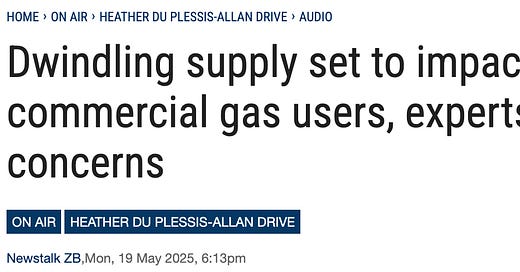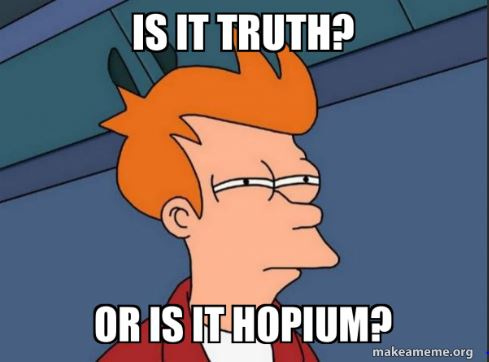Today’s news that industrial gas users are experiencing unsustainable price hikes, or worse are unable to secure supply, when renegotiating gas contracts comes as no surprise.
To understand what is going on and how we got here I refer to my first two articles. From august 2023 with a few key extracts below.
As many of you are recently new to this Substack I’m re-posting these articles as they set the scene for todays news.
Cooking with the gas! or maybe not?
New Zealand’s introduction to gas as an energy source came with the 1959 discovery of the Kapuni gas field in Taranaki followed by the introduction of a gas distribution network in 1970.
This piece looked at how gas reserves are calculated, which is important to understand the difference between what we might have and what we probably have.
It also looked at the specifics of the 2023 reserves data.
New Zealand has 1030PJ of 1P proven reserves….
Depending on the weather (South Island hydro lake levels) this could be between 6 - 7 years of gas left.
This analysis is however overly simplistic and there are a number of other considerations that we will look into in in future posts, but the key take away is that we don’t have a lot of gas left, or time. My optimistic view is that the figure is somewhere between 1P and 2P reserves. My pessimistic view is that depleted gas wells are hard to predict, and the economic cut off for production is unlikely to see all the reserves recovered, as such it could be less than the 1P figure.
This is a concerning situation with so many of our primary industries entirely dependent on this energy source. Will the gas run out or can we move closer to the 3P reserves figure? What could we replace gas with? Can we build replacement infrastructure in the time we have before the gas runs out?
It has subsequently transpired that the “less than 1P” figure was the correct estimate.
My second piece dived into the situation in more detail.
Hopium?
In our last post we looked at the New Zealand gas reserves profile and the potentially very short timeline we have before the gas runs out.
In this piece I looked at the MBIE response to industry concerns that there was less than 10 years of gas left.
The reserves reported on 2022 were 1967PJ. This means that in addition to 145PJ used last year (2022) we had a reserve write down (reserves that we thought were there but actually don’t exist or can’t be recovered) of 187PJ. This means that despite what we used the total change in reserves was -332PJ.
This is the unpredictable nature of 2P reserve profiles, especially when the majority of reserves are assigned to late life depleted fields.
There sure seemed to be a lot of incongruence between the assurances that were given and the data.
Firstly, gas usage, by MBIE’s own figures, show demand is predicted to increase, and not drop below 145PJ for about 5 years as we noted above.
Secondly, 2027 is only three and a half years away. This is the real crux of this issue. What happens at this time? Gas rationing? Some businesses have to find alternative energy sources or close? Do we prioritise domestic consumers at the expense of industry and further impact the balance of trade? What is the price of gas when demand outstrips supply? What is the overall impact to the economy of this?
There sure seems to be a lot of hoping going on here.
That second paragraph is pretty much today’s news in a nut shell.
Thanks for reading and sharing these articles.
Coming up in a couple of days is a piece for consideration on budget week.
Larry







"There sure seems to be a lot of hoping going on here." Never was a truer word said. Our politicians are totally captured by the industry which put my bills for gas and electricity up 25% this month.
Hallelujah... of all places (not in in the Aussie press)
UK Telegraph:
https://www.telegraph.co.uk/business/2025/05/22/new-zealand-abandons-jacinda-arderns-net-zero-push/